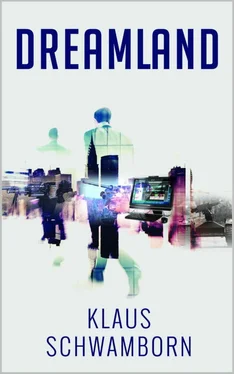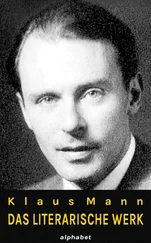“They’re taking it that seriously?”
“They don’t seem too worried about the costs this will incur,” Nathan said. “In fact, they told JW to let the program continue with its attempted decipher. They know something but aren’t ready to discuss it on an open line. Either way, the NSA seems very jumpy about it.”
“They are just so damned paranoid,” Emily remarked.
“Yeah,” Nathan laughed. “That’s exactly what I said to JW.”
“What do you want me to do, Nate?” Sven asked. “Keep monitoring?”
“Yes, for now. Let me think on it,” Nathan said in contemplation. “I’ll be in the Cube if you need me.”
Finished with his beverage, Nathan tossed the paper cup into a nearby recycling bin and walked past the media room around the central partition towards a private elevator. He presented his security card to the adjoining key pad which immediately lit up and requested that he enter a five-digit passcode. He tapped the key pad with his index finger, paying little attention to which number he hit and pressed Enter .
Phil Roberts, their systems administrator, suggested that often the best safeguard was hiding something in plain sight. The idea came to him from Spielberg’s movie, ET The-Extraterrestrial , where the gentle alien concealed himself from Elliott and Gertie’s mum by laying motionless amongst an abundance of oversized soft toys stacked in the playroom. Phil’s notion, however, was not one of open concealment, but rather, one of misdirection.
The key pad display instructed the user to enter five digits when only one was actually required, and that could be any number between zero and nine. Entering more than a single digit prompted to try again. After the third unsuccessful attempt, it indicated that the system was now locked out. Again, simple misdirection. The system never went into lockout mode. Personnel with authorised access never had to remember the passcode, and it didn’t need to be changed at regular intervals.
The elevator door opened, Nathan stepped into it and faced a small camera mounted on the left panel. This was, in fact, the only authentic mechanism granting access to an authorised user◦– a retinal scanner. From the top floor, the elevator had a single destination. The Cube .
Nathan regularly descended to this tranquil, underground sanctuary on days where he felt overwhelmed; days where he needed to escape from the pressures of everyday life; days where he wanted to stop the world and get off. Today was not such a day. He simply needed time to think.
Settled in the corner workstation’s comfortable chair, Nathan gave little heed to the soft whispers of cooling fans or the IBM’s banks of small LED lights flickering rapidly in tune with network activity, much like Christmas icicle lights on steroids. The soft ambience from overhead lighting abetted the inner serenity and safety he felt. Safety from what, he didn’t know. It just felt right being totally insulated from everyone and everything.
Apart from the elevator, the only other access to the outside world was an intercom that linked to Monica’s workstation on the top floor.
When Nathan felt the occasional need to retreat into his introverted nature, or he simply craved some alone time, this was the perfect spot.
Turning his chair slightly towards the right, Nathan looked at the IBM. It didn’t demand anything, didn’t pressure him with deadlines and best of all, it didn’t argue. It simply got on with its duties at lightning speed, totally oblivious of the burdens and anxieties humanity had created for itself.
Leaning back, Nathan considered what James had explained earlier and why the NSA hadn’t been able to pinpoint the transmission’s exact location. That must have irritated them , he thought. Nathan was an expert on many aspects of technology but knew very little about the intricacies of communications wavebands. That was James’s area of expertise; one on which he had built a successful company.
Modern radio receivers operated on two bands; FM, where the signal’s frequency was modulated and AM, where the amplitude was modulated. Music stations typically favoured FM for its clarity, whereas, talk shows were usually on the AM band.
Nathan’s thoughts digressed, remembering with fondness the ornate old valve-radio proudly positioned in the centre of his grandfather’s family room. Like all radios of its day, it could receive on the short-wave band from where international services like the BBC, Deutsche-Welle and Radio Luxembourg could be tuned in to.
Attempting to listen in on any of those stations required remarkable dexterity. Regardless of how carefully the tuning knob was rotated, intermittent high-pitched electronic tweeting sounds invariably started fading in and out over the music or announcer’s voice. Medium-wave was the usual choice for radio listeners, and although reception was a little more consistent, it, too, had its nuances. The radio had to be within a certain range of the transmission antennae, much like today’s localised FM stations, but unlike FM, cloud cover would cause distortion, and electrical storms invariably overshadowed the broadcast with perpetual static.
Today’s generations know nothing of quality family time , Nathan thought. As a young boy, he had little understanding of adult conversations while he entertained himself with his few precious toys on the carpet, but there was interaction in the family. There was no such thing as dinners in front of the TV, with everyone mesmerised by fake news and mindless reality shows. Animated family discussions were the norm. Bygone days, sadly, never to be seen again. Today, if you needed to talk to your kids, you had to text them, even if they were in the same room.
Added as a novelty feature by Grundig and Blaupunkt, German manufacturers of consumer electronics, long-wave didn’t gain much popularity; there were simply too few broadcasting stations transmitting in that band. Radio-hams too, didn’t see much benefit, other than a frequency to toy around with for a while.
The military, however, found it extremely beneficial. Chances that anyone listening in on their communication was slim, but the biggest advantage◦– tall masts or dishes weren’t required. The aerial was simply rolled out on the ground and could even be buried a few inches into loose soil. There was only one proviso◦– using frequency as the basis, the aerial had to be an exact length. Signal strength improved between transmitting and receiving antennae if they were both in parallel, and communications exchanges hundreds of miles apart were possible. The signal travelled along the ground making triangulation by aircraft or satellite impossible.
On a dark night, the exact direction of a remote flashlight was obvious, but its distance from the observer could only be guessed. That was the case when the transmission was intercepted by one of the government’s clandestine listening posts. The precise direction was known, but not the exact distance. Computers using secure military channels sent the data on to its ultimate destination◦– the sixteen acres of secure underground databanks at Fort Meade.
With his thoughts back on the elusive package being dissected in the IBM’s memory banks, Nathan wondered if it really was undecipherable. Could it genuinely be that complex? The IBM was capable of decoding the most convoluted information, yet, this particular file had its programs completely bewildered.
What if it were so simplistic, that the decipher algorithms just didn’t see it? Much like Emily’s copyrights hidden in logos and icons◦– plainly visible, if you knew where, and how, to look.
In an attempt to thwart a dubious business deal a year ago, Emily had left a mischievous graphic on James’s computer. With progressive contrast adjustments, James separated the tones on what appeared to be an unadorned grey image. Initially indistinguishable to the human eye, Emily’s name was subsequently revealed.
Читать дальше












